Indian Motorcycle, a name synonymous with American motorcycling, often plays second fiddle to Harley-Davidson in popular discourse. Despite facing historical challenges, Indian has consistently produced motorcycles that are not only visually stunning but also technically competitive. Modern Indian models like the Chieftain, Dark Horse, Scout, and FTR 1200 stand tall in their respective categories, building upon a foundation of rich heritage. Indian’s history is a tapestry woven with threads of innovation in cruisers, baggers, flat track racing, motocross, and even wartime contributions. Remarkably, a 1920s Indian still holds the record as the fastest sub-1000cc Indian ever built. This list celebrates ten Classic Indian Bikes that truly embody the American spirit of ingenuity, hard work, and resilience.
To curate this list of ten iconic Indian motorcycles, we consulted resources such as the official manufacturer’s website, Mecum Auctions, and the National Motorcycle Museum, ensuring a comprehensive and historically accurate selection.
Related
10 Amazing Used Indian Motorcycles You Can Buy Under $15,000
For those seeking stylish cruising without exceeding budget constraints, these used Indian bikes present excellent options.
1 1901 Indian F-Head
The Prototype Pioneering Modern Motorcycle Design
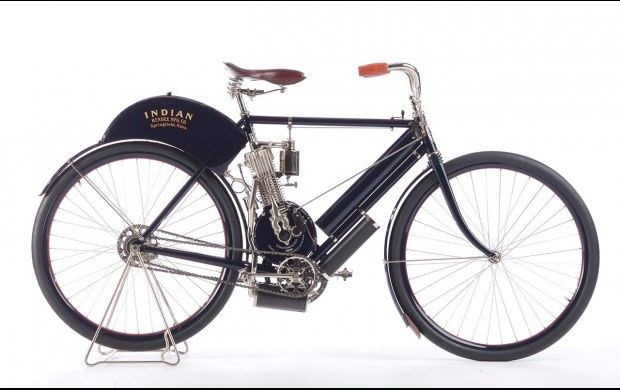 Indian F-Head studio image Indian
Indian F-Head studio image Indian
While contemporary motorcycle giants like KTM and Ducati utilize engines as stressed members within their frame designs, this innovation originated much earlier with Indian’s F-Head. This pioneering model not only marked Indian’s first foray into dedicated engine design but also introduced the chain final drive, a departure from the era’s prevalent shaft or belt drives. However, the F-Head remained a prototype, serving to generate capital and pave the way for Indian’s inaugural production motorcycle, the Indian Single. Its rarity makes encountering one today a truly exceptional experience.
Indian F-Head Specifications
| Engine | 213cc two-stroke single-cylinder |
|---|---|
| Power | 1.75 horsepower |
| Curb Weight | Around 100 pounds |
| Estimated Price | Extremely Rare, Price Unknown |
2 1910 Indian Single Model A
Introducing the First Dedicated Indian Motorcycle Frame
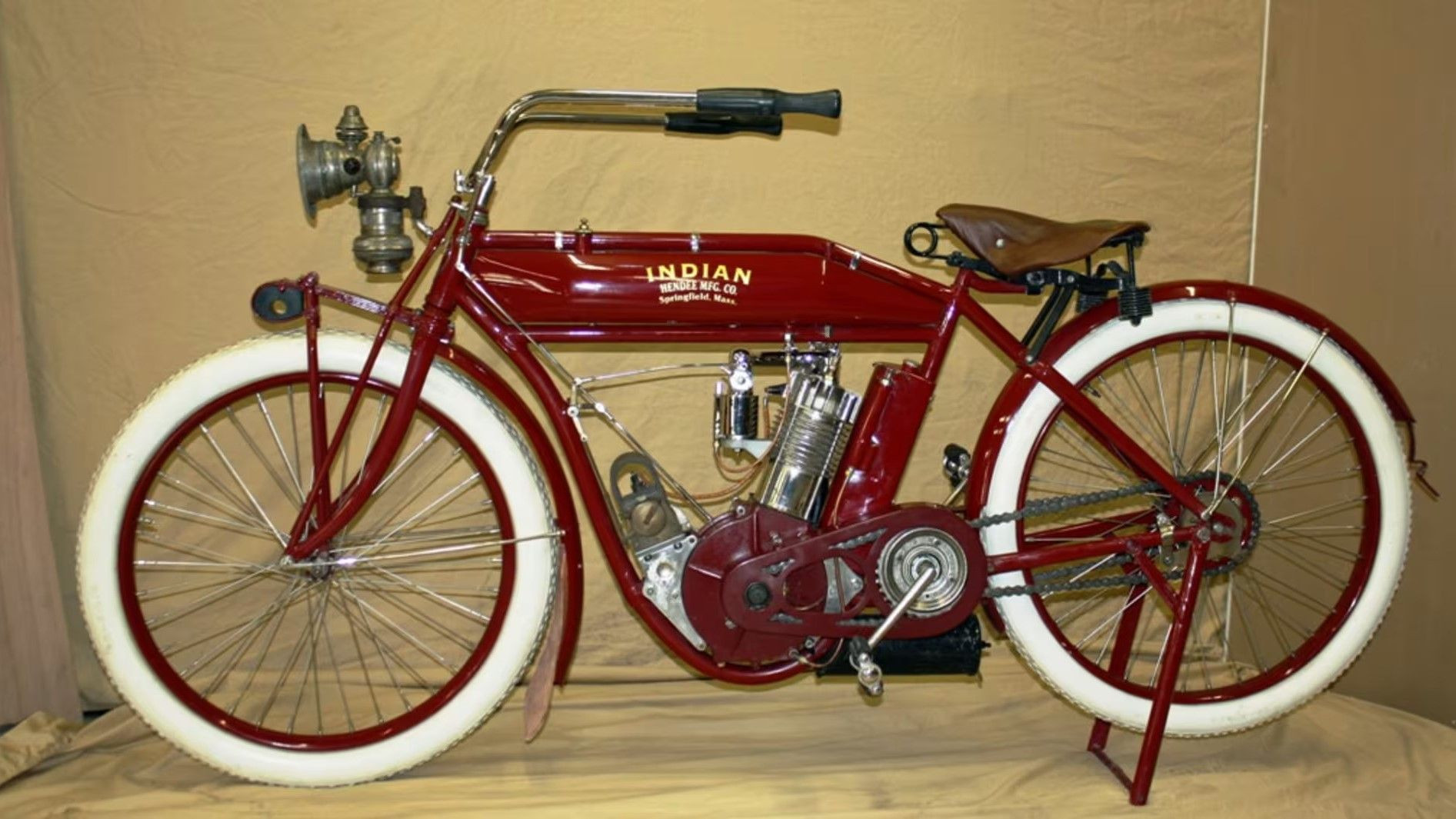 1910 Indian Single Model A Mecum Auctions
1910 Indian Single Model A Mecum Auctions
Indian’s reputation for innovation is evident not just in the F-Head engine but also in the Single Model A’s frame. Prior to this model, Indian motorcycles were adapted from bicycle frames, reflecting a pedal-first design philosophy. The 1910 Single Model A marked a significant shift, debuting Indian’s first purpose-built motorcycle frame. Incorporating features now considered standard, such as an integrated fuel tank, designated engine area within the frame, and pedals positioned where modern bikes have foot pegs, the Single Model A was remarkably forward-thinking for its time. It also featured a novel pedal-operated clutch engagement system.
Indian Single Model A Specifications
| Engine | 461.63 cc four-stroke single-cylinder |
|---|---|
| Power | 4 horsepower |
| Curb Weight | Around 150 pounds |
| Estimated Price | Very Rare, Price Unknown |
3 1920 Indian Scout Streamliner “Munro Special”
Still The Fastest Indian Motorcycle in History
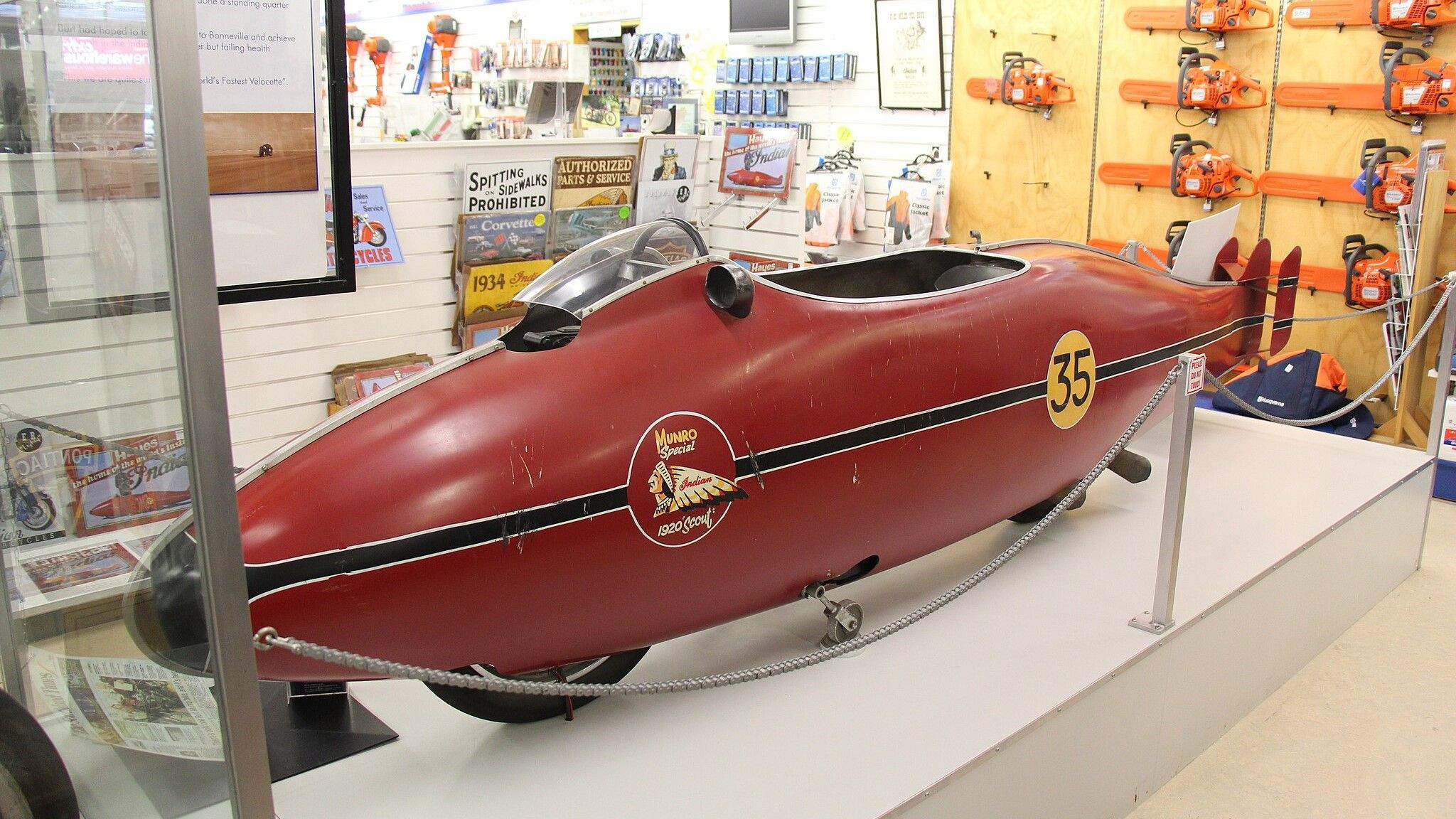 1920 Indian Scout Streamliner Burt Munro Special Sicnag, CC BY 2.0, via Wikimedia Commons
1920 Indian Scout Streamliner Burt Munro Special Sicnag, CC BY 2.0, via Wikimedia Commons
Imagine a motorcycle achieving a world land speed record in the late 1960s, not with cutting-edge technology, but with a machine dating back to 1920 – this is the story of the Indian Scout Streamliner. Burt Munro, a New Zealand motorcycle enthusiast, dedicated decades to modifying his 1920 Indian Scout. Originally equipped with a 610cc V-twin engine struggling to exceed 55 mph, Munro transformed it into a 950cc powerhouse. At the Bonneville Salt Flats, this modified Scout reached a staggering 205.67 mph, setting a world land speed record. Encased in an aerodynamic shell, the underlying 1920s Indian is almost unrecognizable, yet this machine remains a testament to ingenuity and perseverance.
Scout Streamliner “Munro Special” Specifications
| Engine | 953cc V-twin engine (modified) |
|---|---|
| Power | Approximately 100 horsepower |
| Curb Weight | Unknown |
| Estimated Price | Priceless, Historically Significant |
4 1921 Indian Power Plus
The Forerunner of the Legendary Indian Chief
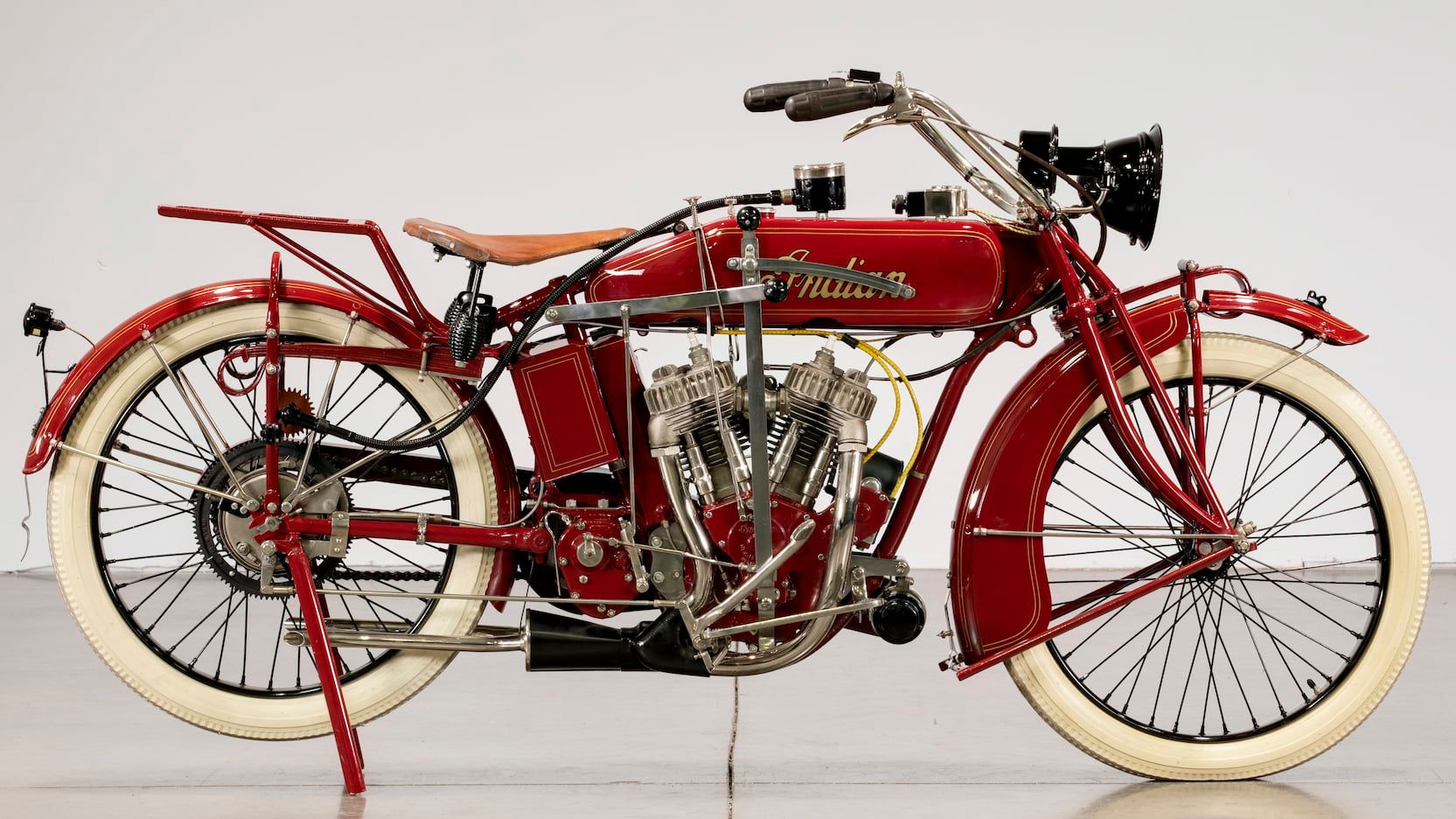 Indian Power Plus studio shot Indian
Indian Power Plus studio shot Indian
Within a decade of its inception, Indian had advanced to producing the Power Plus, featuring a robust 1,189cc V-twin engine generating 8 horsepower – a substantial output for the era. This power enabled Indian to gain traction even in the British Isles. Its capabilities were further demonstrated by stunt rider Cannonball Baker, who rode a Power Plus from Vancouver to Tijuana (1,600 miles) in just three days. While a technological marvel of its time and arguably the pinnacle of American motorcycling, the Power Plus is most revered as the direct ancestor of the Indian Chief, a legendary cruiser that rivals both Harley-Davidson and international competitors.
Indian Power Plus Specifications
| Engine | 1,189cc side-valve 42-degree V-twin |
|---|---|
| Power | 8 horsepower |
| Curb Weight | 430 pounds |
| Original Price | $510 (at launch) |
Related
The 10 Best Indian Motorcycles Ever Built
Explore the finest creations from America’s esteemed motorcycle manufacturer.
5 1927 Indian Four
The Duesenberg of Motorcycles: Luxury and Performance Combined
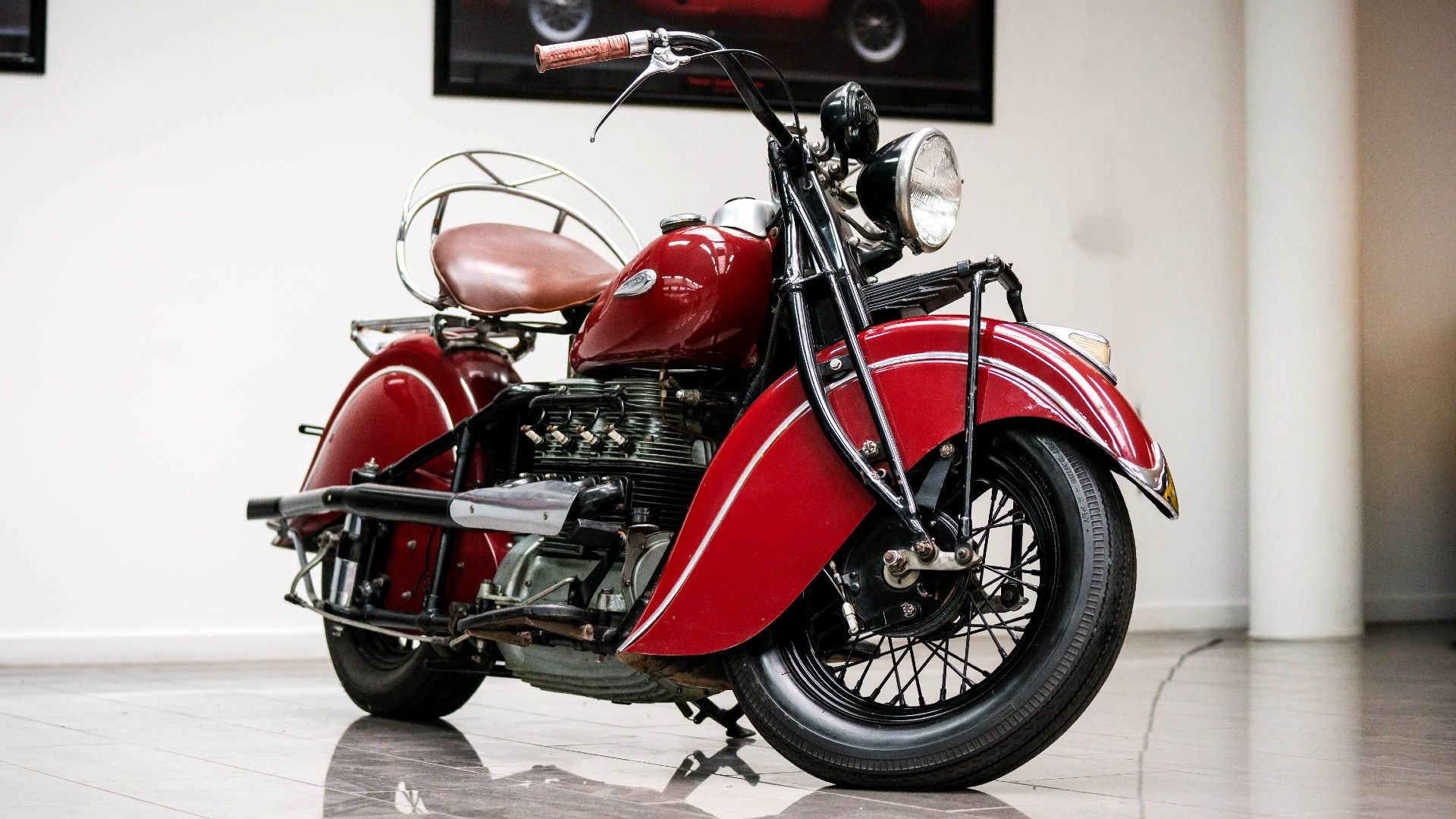 Steve McQueen Indian Four 5 Collecting Cars
Steve McQueen Indian Four 5 Collecting Cars
In the pre-World War II period, four-cylinder engines were highly fashionable in American automobiles, and Indian embraced this trend in motorcycles by acquiring the Ace Motor Corporation. They integrated Ace’s four-cylinder engine into their lineup, resulting in the Indian Ace, which evolved into the Indian 401 in 1928. With minor refinements, this model endured until 1942 and even graced the collection of Steve McQueen. However, wartime demands shifted Indian’s focus to military production, and the Indian Four was unfortunately discontinued. While uncommon today, imagining an alternate history where Indian continued producing four-cylinder cruisers for the masses is intriguing.
Indian Four Specifications
| Engine | 1,261.8 cc four-stroke inline-four |
|---|---|
| Power | 40 horsepower |
| Curb Weight | 496 pounds |
| Estimated Price | Collectible, Price Varies |
6 1927 Indian Scout BGE 45
The Sporty Indian Motorcycle of the Roaring Twenties
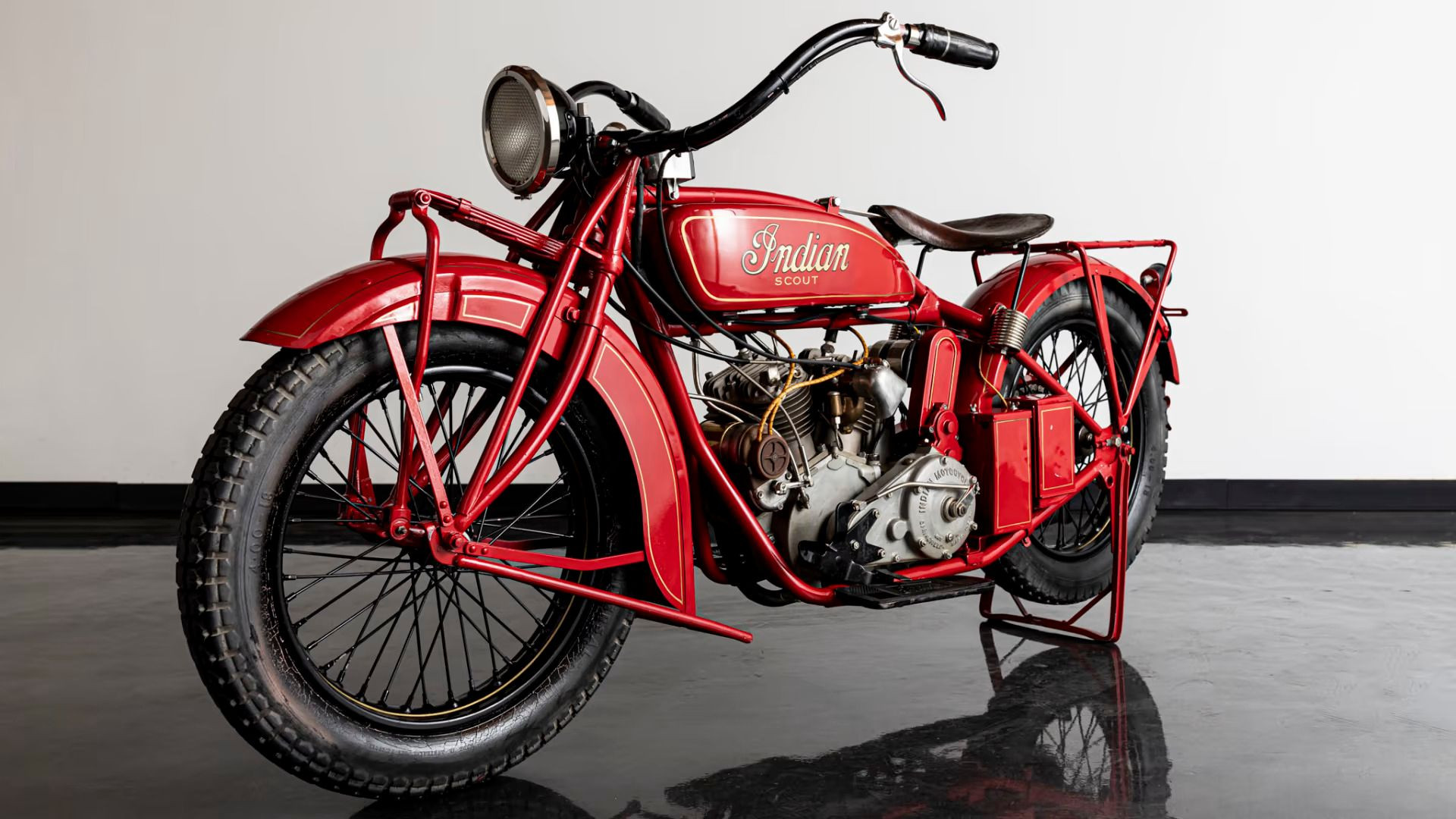 1927 Indian Scout BGE 45 Mecum Auctions
1927 Indian Scout BGE 45 Mecum Auctions
Prior to World War II, the 1927 Indian Scout BGE 45 arguably represented Indian’s finest motorcycle. It was a calculated effort to bring Indian’s racing heritage to everyday riders, and it succeeded. This lightweight motorcycle featured a 745cc V-twin engine, considered highly advanced for its time, with a transmission case directly bolted to the engine, incorporating a geared prime drive and a side-valve intake. This engine, combined with a rigid hardtail frame, delivered a distinctly “sporty feel,” as Indian described it, making it a formidable competitor on the racetrack. Though succeeded by the Scout 101 the following year, the BGE 45 remains a significant and beautiful motorcycle, paving the way for future sporty Indian models.
Indian Scout BGE 45 Specifications
| Engine | 745cc V-twin |
|---|---|
| Power | 18 horsepower |
| Curb Weight | 317 pounds |
| Original Price | $9,104 (Adjusted for inflation) |
7 1940 Indian Chief
The Definitive Chief: Iconic Styling and Performance
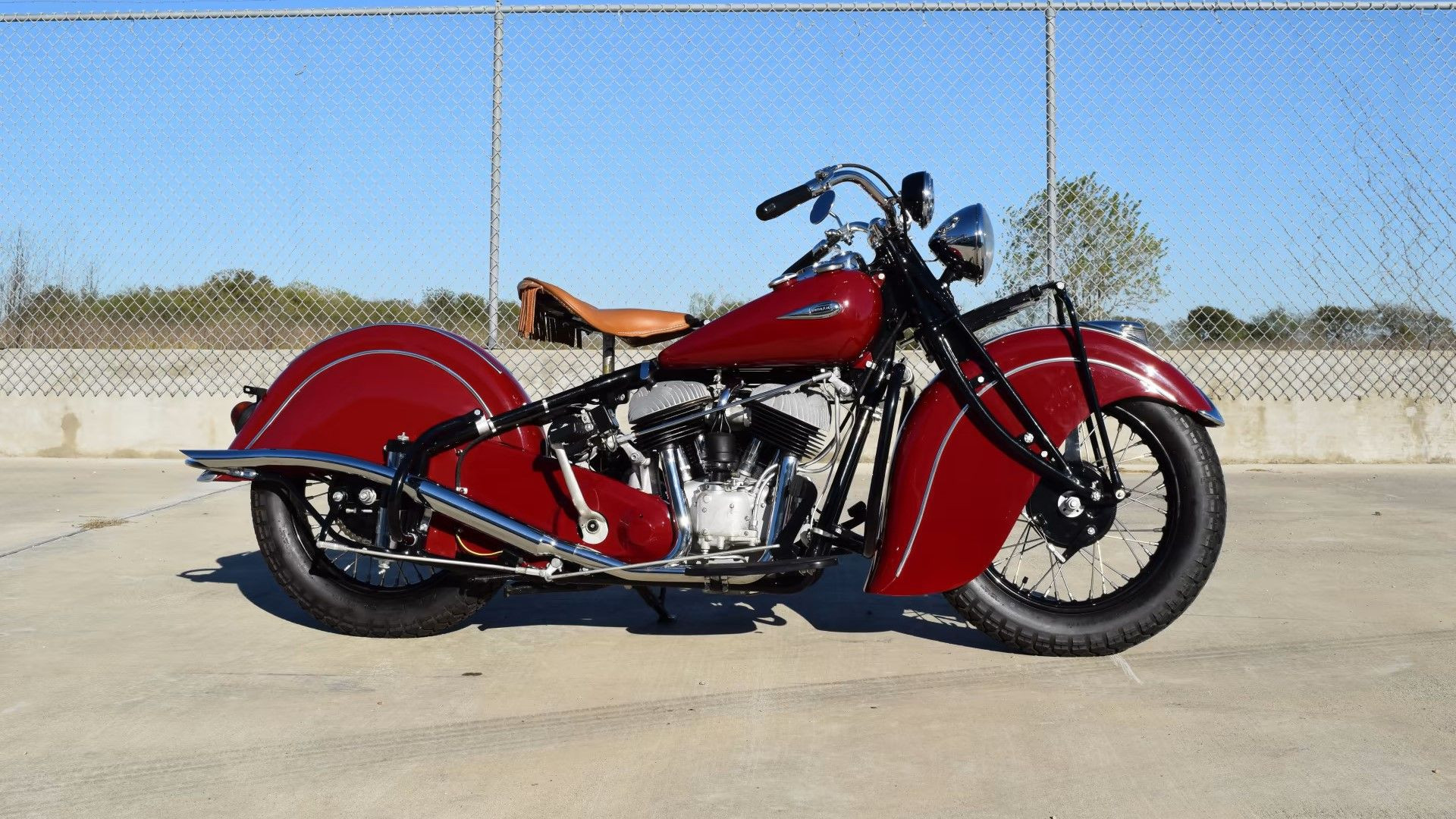 1940 Indian Chief Mecum Auctions
1940 Indian Chief Mecum Auctions
The Indian Chief lineage began in 1922, but it was in 1940 that it evolved into the quintessential Chief we recognize and admire today. This year marked the introduction of its signature valanced fenders and flowing lines. The frame was also subtly revised to accommodate saddlebags or a bench seat, features uncommon at the time. The 1940 Chief was not just about aesthetics; it was capable of reaching 80 mph, making it suitable for police and military use. This high-performance machine was an early example of an American touring cruiser and is arguably one of the most visually striking Indian motorcycles ever produced.
Indian Chief Specifications
| Engine | 1,210cc V-twin |
|---|---|
| Power | 39 horsepower |
| Torque | Approximately 40 pound-feet |
| Curb Weight | 540 pounds |
| Original Price | $1,049 (at launch) |
8 1942 Indian Model 741
Indian’s Contribution to the World War II Effort
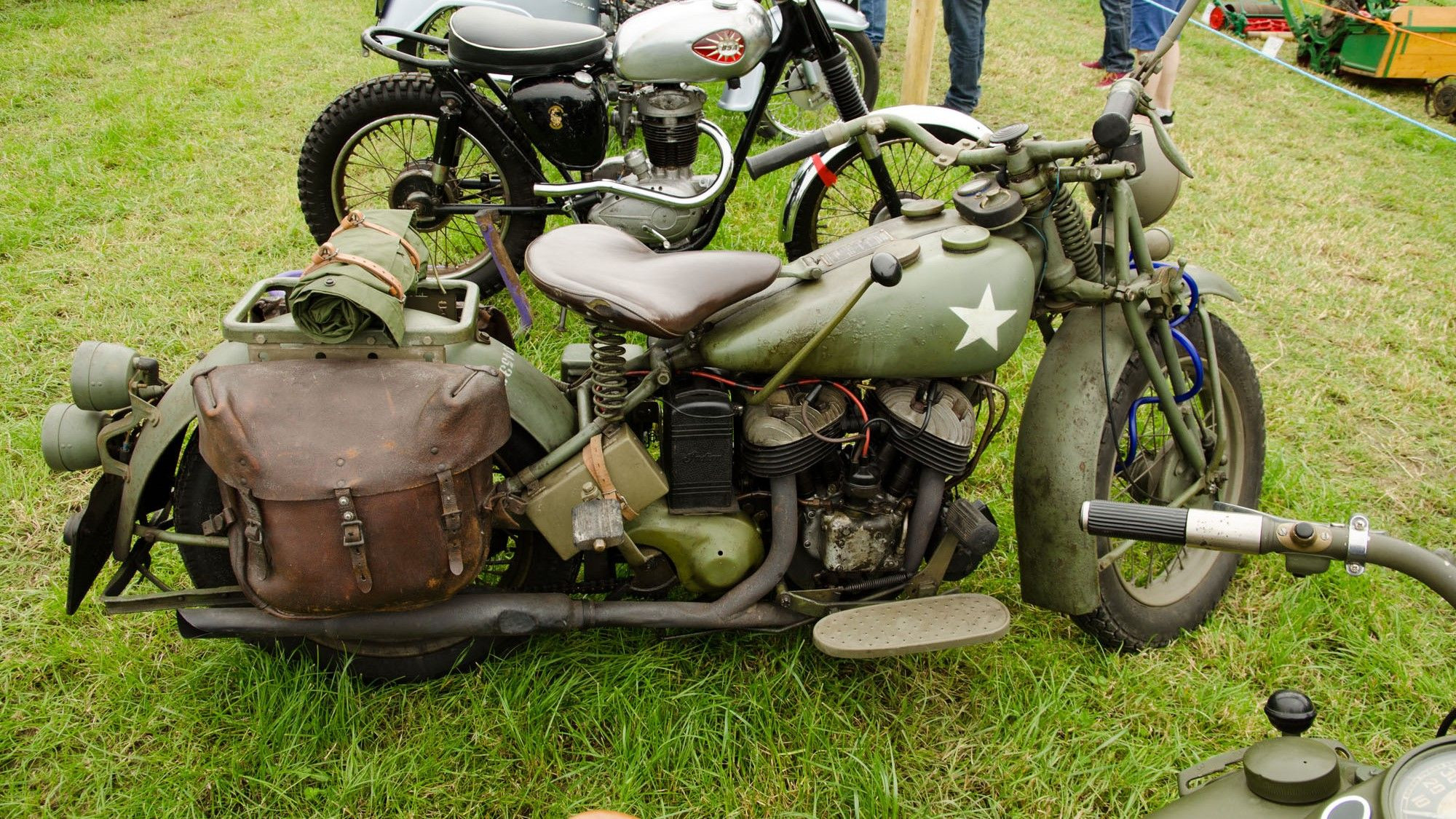 Indian Model 741 B SG2012, CC BY 2.0, via Wikimedia Commons
Indian Model 741 B SG2012, CC BY 2.0, via Wikimedia Commons
During World War II, Indian Motorcycle played a crucial role alongside Harley-Davidson in supporting the armed forces with the Model 741. This motorcycle utilized the V-twin engine from the Scout, but with reduced compression to ensure reliability in diverse climates and with lower-grade fuel. It incorporated a Chief frame modified with increased ground clearance, enhanced suspension, and attachment points for military equipment. Of the 44,000 Model 741s produced, many found their way into the hands of veterans post-war, reigniting interest in Indian motorcycles and sustaining the brand through another decade.
Indian Model 741 Specifications
| Engine | 492cc V-twin |
|---|---|
| Power | 15 horsepower |
| Curb Weight | 410 pounds |
| Estimated Price | $200 – $400 (Post-War Era) |
9 1949 Indian Silver Arrow
A Single-Cylinder Gem, Ahead of Its Time
 1949 Indian Silver Arrow Mecum Auctions
1949 Indian Silver Arrow Mecum Auctions
Having explored V-twins and inline-fours, the Indian Silver Arrow represents American single-cylinder motorcycle design at its best. This model was highly sought after in its era, distinguished by its lightweight construction, modern aesthetics deviating from pre-war styles, and a potent single-cylinder engine that rivaled British singles of the time. However, Indian’s post-war models were costly to manufacture and faced market challenges. Despite its desirability, the Silver Arrow and its platform did not achieve widespread commercial success. Nevertheless, its brief but bright presence in the motorcycling world was noteworthy.
Indian Silver Arrow Specifications
| Engine | 218cc overhead-valve single-cylinder |
|---|---|
| Power | Power Output Unknown |
| Curb Weight | Weight Unknown |
| Estimated Price | Collectible, Price Varies |
10 1953 Indian Chief
The Last Classic Chief, Bridging Eras
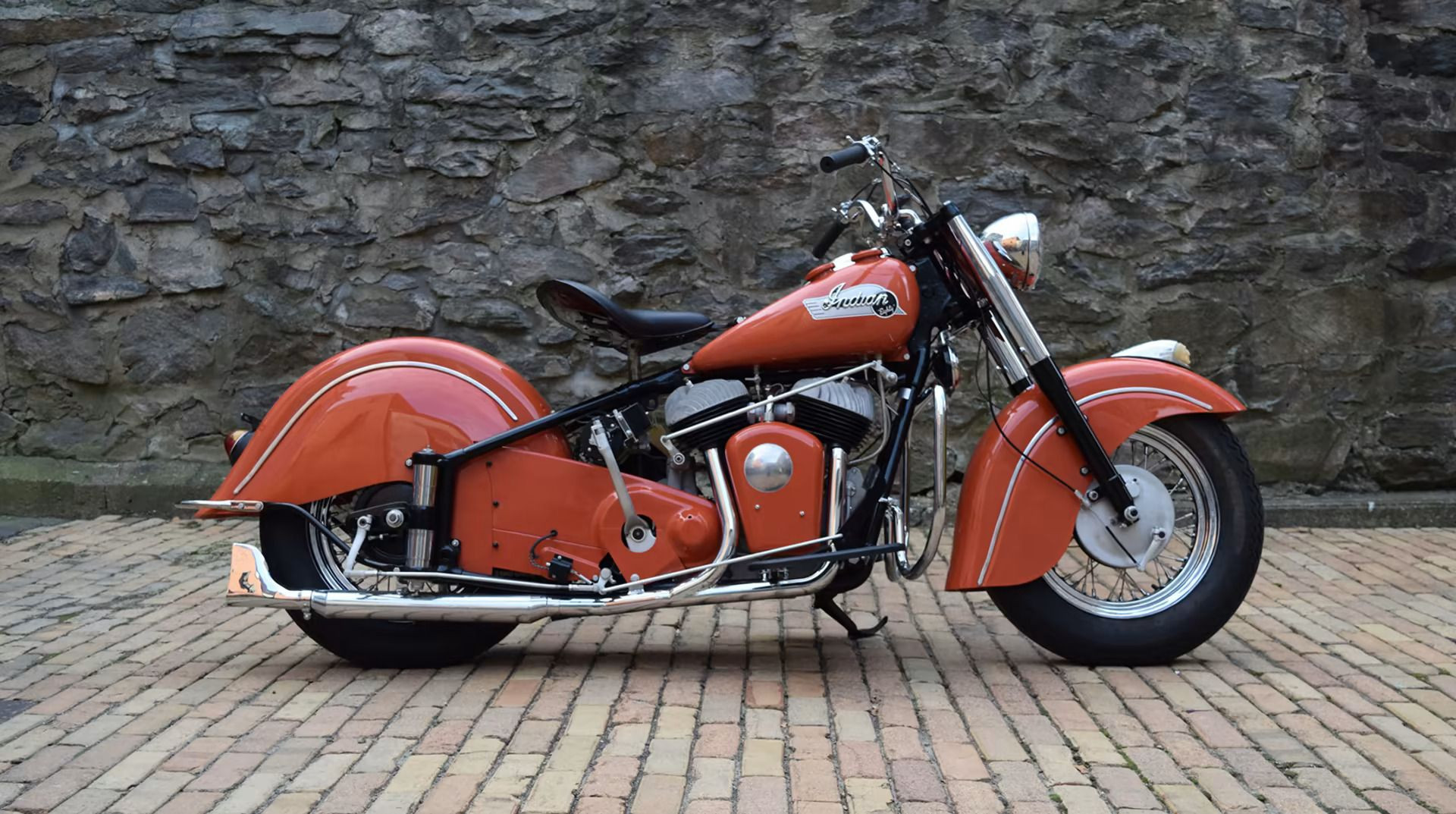 1953 Indian Chief Mecum Auctions
1953 Indian Chief Mecum Auctions
The 1953 Indian Chief marked a transitional period for the brand, serving as a precursor to modern Indian motorcycles. While not revolutionary in its engineering, retaining a pre-war side-valve V-twin engine, it offered superior suspension compared to competitors of the time. Its defining features were the imposing, generously sized fenders and classic Chief styling, creating a dramatic and attention-grabbing presence. Facing financial difficulties, Indian ceased production in the late 1950s, with only approximately 600 of these 1953 Chiefs ever manufactured. Today, this particular Chief iteration is among the most prized Indian models. Modern Indian Chiefs strive to emulate its character and appeal, acknowledging its enduring legacy.
Indian Chief Specifications
| Engine | 1,300cc flathead four-stroke V-twin |
|---|---|
| Power | 50 horsepower |
| Curb Weight | 570 pounds |
| Estimated Price | Highly Collectible, Premium Price |


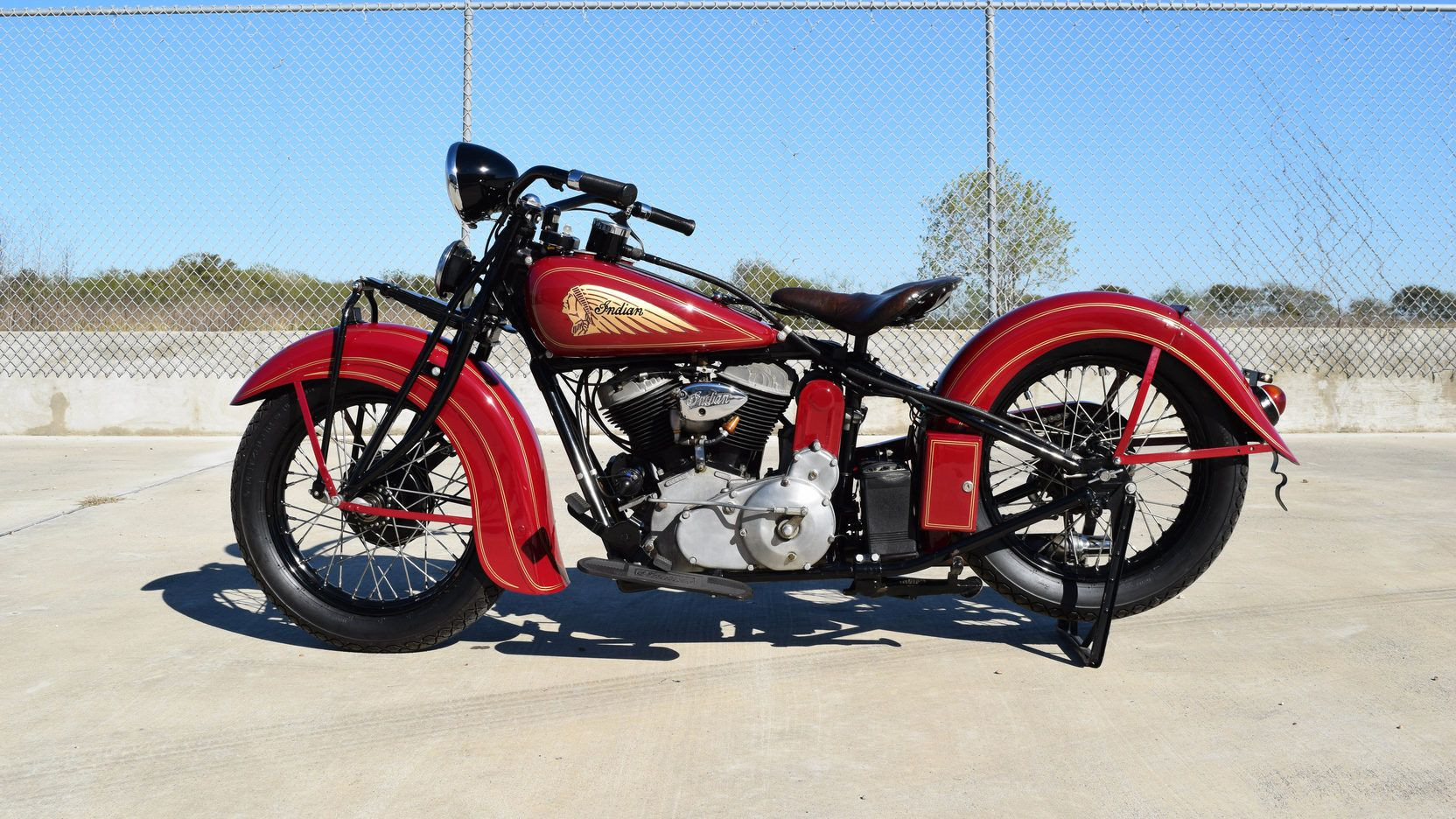 Indian Scout static shot
Indian Scout static shot